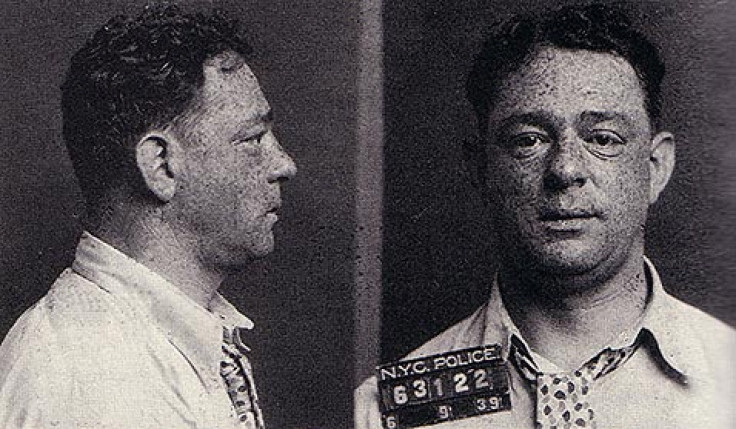The Ballad of Red Levine: The Mafia Assassin Who Vanished Off The Face Of The Earth

Samuel "Red" Levine isn't a name known to the general public, that is, outside of hardcore aficionados of American mafia and organized crime. Yet, Levine -- a Jewish gunman whose red hair and freckles inspired his nickname -- allegedly participated in two of the most pivotal crimes in Mafia history.
Following the orders of Lucky Luciano and Meyer Lansky, Levine was one of a crack squad of killers who're believed to have murdered Joe "The Boss" Masseria in a Coney Island, Brooklyn restaurant in April 1931; five months later, Levine helped end the life of Masseria’s rival, Salvatore Maranzano, the Sicilian "capo di tutti capi," or "boss of bosses," who established the rules and hierarchy of the U.S. version of La Cosa Nostra that still exist.
Levine himself is said to have stabbed Maranzano in the heart. (Jews were employed for this spectacular hit since Maranzano, like most of the old-fashioned Sicilian dons didn't associate with them and wouldn't recognize his killers.)
While Luciano, Lansky, Masseria and Maranzano have become legends, Levine's largely forgotten.
Even more intriguing, it's unclear whatever became of Red Levine.
For, unlike scads of other fellow gangsters, Levine didn't end up in prison or meet a bloody end in a hail of bullets.
He simply seems to have fallen off the face of the earth or at least off the public's (and police's) radar.
What's known is that Red was a prominent member of Murder Inc., the fearsome organization of hired killers based out of Brownsville, Brooklyn, who committed hundreds of murders for the mob throughout the 1930s.
Many of these paid assassins were Jewish – indeed, legend has it that Red was so devout that he observed the Sabbath and wouldn't do a "piece of work" -- that is, kill someone -- on that holy day.
After the early 1940s, by which point most members of Murder Inc. had either died or faced justice for their many crimes, Levine seems to have disappeared and apparently spared himself the indignity and inconvenience of prison.
In late 2009, the New York Times published an article in which a man named Sanford L. Smith, son of Izzy, the owner of a mortuary on the Lower East Side of Manhattan, claimed Levine worked for them in the mid-1960s.
"Red was one of the few guys from Murder Inc. who never got killed or went to prison,” Smith told the newspaper.
“He was on our payroll. He needed to show legitimate income. Red got a check of $200 every week.”
Smith's father Izzy, apparently was acquainted with Lansky and Bugsy Siegel, perhaps the two most famous Jewish mobsters in history. But Izzy only told his son at the time that Red was an “outside salesman.”
Red Levine apparently had a different vocation by the 1970s.
A report from the Village Voice from March 2001 indicated that Levine was involved with the Newspaper and Mail Deliverers Union during the 1970s, suggesting that “Jewish racketeers” played a major role in the union even at that late a date.
“Law enforcement officials, as well as longtime union members and mob associates … say that Levine cleverly allowed each of the city's five Mafia families to have a piece of the newspaper delivery action, which included bootleg sales of stolen papers as well as loan-sharking and gambling among drivers,” according to the the article.
Beyond these few scant and largely unconfirmed reports, little else is known about Red Levine -- in fact, even his dates of birth and death are also a mystery.
Pat Hamou, on his sixforfive blog, wrote that Levine was a particular favorite of Luciano’s, who contracted him for a variety of jobs. Luciano reportedly once said Red was "the best driver and hit-man I ever had.”
Hamou also claimed that Levine was “deeply religious” and devoted to his Orthodox Jewish faith.
“Under his fedora, he always wore a kippah, also known as yarmakule, or skullcap in simpler terms,” he wrote.
“Despite his ability to dispose of his fellow man in a cool, calculated, and professional manner … he was devoted to his wife and kids back in Brooklyn, and kept a kosher household.”
If indeed Levine gave up the life of a mobster or at least curtailed his homicidal activities after the demise of Murder Inc. in the early 1940s, he spared himself the brutal ends met by many of his cohorts in that gang.
Louis "Lepke" Buchalter, once the boss of Murder Inc., fried in the electric chair at Sing Sing in 1944; the homicidal maniac Albert Anastasia was gunned down by assassins while getting a shave at a Manhattan barber shop in 1957; Abe "Kid Twist" Reles, who became an informant, was mysteriously thrown out of a hotel window in Coney Island, while under police guard; and Harry "Pittsburgh Phil" Strauss, Harry "Happy" Maione, Frank "The Dasher" Abbandando and Martin "Buggsy" Goldstein were all executed at Sing Sing.
And, of course, most spectacularly, the notorious Bugsy Siegel was shot to death in a house in Beverly Hills in 1947 for skimming money from a Las Vegas casino – not by law enforcement, but under orders of the Mafia itself.
Perhaps Levine outlived all of his peers by keeping a low profile or maintaining a quiet, honest lifestyle. It's also possible that Lansky, who also lived a very long life helped his old friend settle down, avoid trouble and survive into old age. Lansky died in 1983 at the age of 81.
© Copyright IBTimes 2024. All rights reserved.











